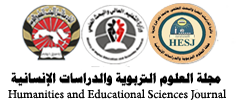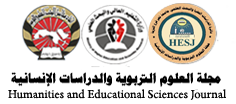Identifying the Optimal Sites for Rainwater harvesting (RWH) for Artificial Recharge of Groundwater in the Basin of Ibb city Using RS and GIS
Keywords:
water harvesting systems, artificial feeding, hydrological characteristics, standards and considerations, selected sites for water harvesting, Ibb city-YemenAbstract
This study is concerned with identifying the optimal sites for rainwater and torrential rainwater collection sites in the city of Ibb, as well as identifying the most important water harvesting systems suitable for the selected sites. In this study, the data of the digital elevation model of the city of Ibb and geographic information systems were used to extract the topographic and hydrological characteristics of the study area. Through the analysis of the topographical, geological, and hydrological characteristics of the city of Ibb, the most important criteria and appropriate considerations were extracted to identify the suitable sites for water harvesting, which meet the basic requirements of the proposed harvesting technology. This is done to ensure that the appropriate technique of water harvesting is compatible with the social, economic, agricultural, geological and topographical conditions of the area. Based on that, the study concluded that (3) optimal sites for surface runoff water collection sites to recharge groundwater: the first proposed main site was identified in the southeast corner of the study area, at the beginning of the fifth grade of the main waterway to meet most of the waterways of the city’s surface (Maitam junction fluid), and a proposal to build a filter dam to harvest water with the implementation of shipping wells; the second site was chosen at the beginning of the rank fourth. It was also suggested to establish a water barrier on the course of the valley for Jeblah waterway. The third proposed site, finally, is located near Qahza-Sabal waterway, and the appropriate way to harvest water is to create artificial water pits (ponds or kerfs).





